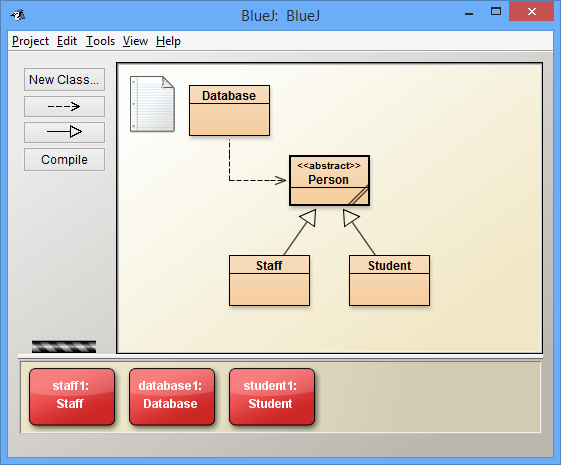Step 3: Installation
- Blue J Mac Mirror Download Torrent
- Blue J Mac Mirror Downloads
- Blue J Mac Mirror Download Pc
- Blue J Mac Mirror Download Free
Download and expand the install file (BlueJ-309.zip). (Mac: control-clicking) a class lets you select a constructor from a pop-up menu to construct an object. Optional: Subscribe to mailing list. If you want to be notified of new releases, go to bluej-announce and subscribe. If you are interested in general. Try a free month and download up to 10 high-res images. Cancel risk-free within the first month. Language Navigation. Language Navigation. Choose your region. Selecting a region changes the language and/or content on Adobe.com. May 01, 2020. The BlueJeans desktop app provides an immersive video, audio, and web conferencing experience. BlueJeans’ rpm packages are signed with a GPG key. Please run 'rpm -import bluejeanspubkey.gpg' to import the key in case package management utility asks for a missing public key. BlueJeans meetings.
Windows:
Double-click the install file (bluej-309.msi).
This will run a standard installation. Follow the instructions on screen. The installer will install the executable bluej.exe. Execute this to run BlueJ.
When executing BlueJ you might get dialog from the firewall asking you whether you want to block or unblock BlueJ; we recommend that you choose not to block BlueJ.
If you have more than one Java version installed, BlueJ will let you select your preferred version the first time it is executed. This can be changed later by running the 'Select BlueJ VM' utility from the Start menu.
Macintosh:
Note: BlueJ 3.0+ requires Java 6. Updating to the latest Java version (via the Mac OS Software Update feature) is recommended. BlueJ 3.0.9 and later also has a package which bundles Java 7, and does not require Java to be installed separately.
Download and expand the install file (BlueJ-309.zip). Move the resulting folder to your preferred location (for example Applications).
Debian, Ubuntu, and other Debian-based systems
Check your distribution's instructions on how to install 'deb' packages. In many cases it will be as simple as double-clicking the downloaded file from within a file manager, and then providing an administrator password to allow the installation to proceed.
Note the 'deb' package requires one of the following packages to be installed:
sun-java6-jdk or openjdk-6-jdk or sun-java7-jdk or openjdk-7-jdk
Installing BlueJ will normally cause an appropriate JDK to be installed.
Please note, the example projects will be installed under /usr/share/doc/BlueJ/
Thanks to Joe Lewis for providing the initial version of the .deb package.
Unix:
Make sure you have a suitable JDK. The Oracle JDK is recommended as it is the most tested. Currently the 'gij' (GNU java interpreter) cannot be used.
Run the installer by executing (from the command shell)
- /path/to/jdk/bin/java -jar bluej-309.jar
... where '/path/to/jdk' should be replaced by the actual path to the JDK.
Note: if you have a suitable java binary in a directory listed in your PATH environment variable, you may be able to omit the '/path/to/jdk' above. Be careful that this does not run an incompatible java implementation (such as 'gij') however! You can check if a Java implementation is in your path by runng 'java -version'.
In the installer, select an installation directory and your JDK directory and install. By default, the installer will install into a directory called 'bluej' inside the directory from which you launch it, and it will pick up the JDK location automatically (if it is run correctly according to the instructions above).
In the directory where BlueJ was installed, you will find a file named bluej. This is the launcher script. Execute this script to start BlueJ. For example:

Note: This installer can be executed on any system with Java installed (including Windows and MacOS), but Windows/MacOS specific icons and configurations will not be present.
Blue J Mac Mirror Download Torrent
Optional: Remove the Installer
If you do not want to make further installations, you can now delete the installer file.
Step 4: Opening a project
After starting BlueJ, open a project by selecting 'Open' from the Project menu. You can find some examples in the 'examples' directory. After the project has been opened, right-clicking (Mac: control-clicking) a class lets you select a constructor from a pop-up menu to construct an object.
Optional: Subscribe to mailing list
If you want to be notified of new releases, go to bluej-announce and subscribe.
If you are interested in general discussion of BlueJ-related questions, read or subscribe to bluej-discuss. There is also an archive of past messages that you can read without subscribing.
Blue J Mac Mirror Downloads
Where to from here?
If you have any trouble with the installation, please read How to ask for help.
If it all works this far, you might like to start reading the Tutorial.
Inkscape 1.0
Released on May 1, 2020
Release highlights
Breaking changes
Breaking changes affect the following areas:
- Some dropped import/export file formats, notably .plt (import and export), .dia, .sk1 and some old Corel Draw and Illustrator formats (import)
Gallery
Live Path Effects
Canvas
Blue J Mac Mirror Download Pc
Theming
More New Functionalities
Blue J Mac Mirror Download Free
Full Release Notes
The full release notes for Inkscape 1.0 can be found in the Wiki, or you can use the following list to jump directly to the feature / area that you are interested in most:
- General: Application
- General User Interface
- Canvas
- View
- Paths
- Tools
- Pencil Tool
- Selection Tool
- Text Tool
- SVG 2 Text Support in Detail
- Live Path Effects
- New Live Path Effects
- New Experimental LPEs
- Improved LPEs
- Import / Export
- Extensions
- Dialogs
- Customization
- Fonts
- Breaking changes / Action required
- For users
- For extension writers